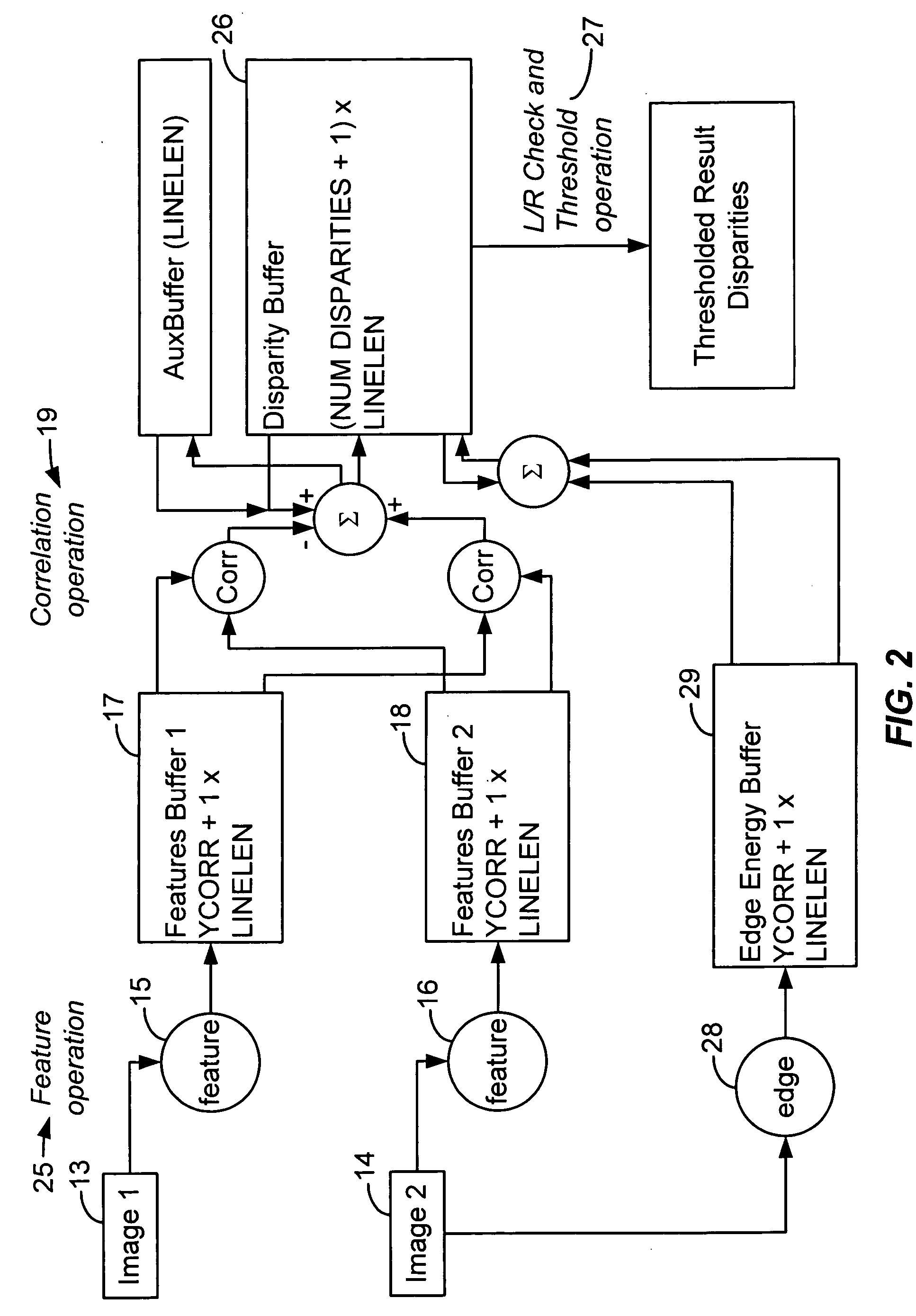Realtime stereo and motion analysis on passive video images using an efficient image-to-image comparison algorithm requiring minimal buffering
a passive video image and image-to-image comparison technology, applied in image analysis, image enhancement, instruments, etc., can solve the problems of inability to accurately compare images, inability to accurately detect motion, etc., to achieve fewer operations, less storage, and a wide stereo range
- Summary
- Abstract
- Description
- Claims
- Application Information
AI Technical Summary
Benefits of technology
Problems solved by technology
Method used
Image
Examples
Embodiment Construction
[0043] The invention provides a small vision module (SVM), which is a compact, inexpensive, real-time device for computing dense stereo range and motion field images. These images are fundamental measurements supporting a wide range of computer vision systems that interact with the real world, where objects move through three-dimensional space. A key feature of the SVM is a novel algorithm for image-to-image comparison that requires less storage and fewer operations than other algorithms, and yet it is at least as effective.
[0044] The hardware / software implementation of the SVM is a combination of standard, low-cost and low-power components programmed to execute this new algorithm. The SVM performs realtime stereo and motion analysis on passive video images. It is a complete system, including image capture, digitization, stereo and / or motion processing, and transmission of results.
[0045] Two of the unique properties of the invention include:
[0046] A novel algorithm that is used f...
PUM
 Login to View More
Login to View More Abstract
Description
Claims
Application Information
 Login to View More
Login to View More - R&D
- Intellectual Property
- Life Sciences
- Materials
- Tech Scout
- Unparalleled Data Quality
- Higher Quality Content
- 60% Fewer Hallucinations
Browse by: Latest US Patents, China's latest patents, Technical Efficacy Thesaurus, Application Domain, Technology Topic, Popular Technical Reports.
© 2025 PatSnap. All rights reserved.Legal|Privacy policy|Modern Slavery Act Transparency Statement|Sitemap|About US| Contact US: help@patsnap.com



